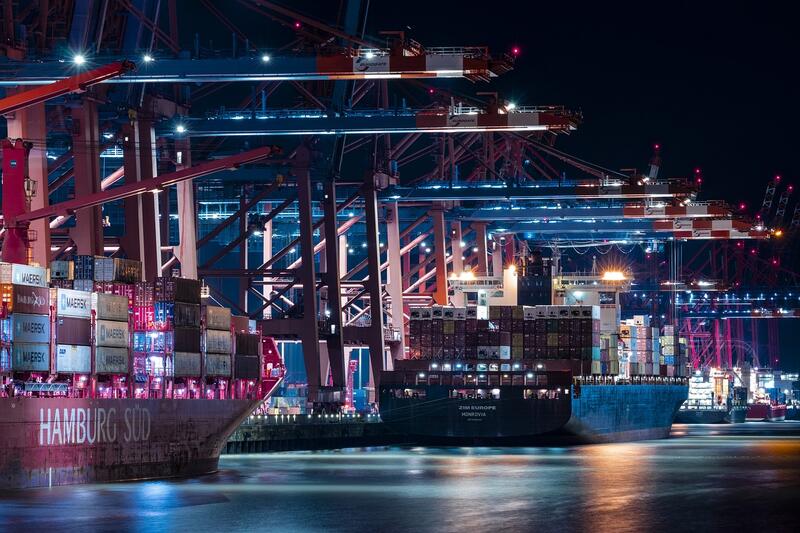Unleashing Sustainability: Decarbonizing Warehousing and support activities for transportation Methods
This article explores the importance of decarbonizing warehousing and support activities for transportation to achieve sustainability goals and reduce carbon emissions.

Introduction
The warehousing and support activities for transportation sector is an essential component of the supply chain industry. This sector is responsible for the storage and distribution of goods, as well as the support activities necessary for the transportation of these goods. However, the sector is also a significant contributor to carbon emissions, which contribute to climate change. Decarbonisation in the warehousing and support activities for transportation sector is, therefore, crucial to reducing the carbon footprint of the sector and mitigating the impact of climate change.
What is Decarbonisation in Warehousing and Support Activities for Transportation Sector and Why is it Important?
Decarbonisation refers to the process of reducing carbon emissions from various sources, including the transportation sector. In the warehousing and support activities for transportation sector, decarbonisation involves reducing carbon emissions from the storage and distribution of goods, as well as the support activities necessary for transportation. Decarbonisation is essential because carbon emissions contribute to climate change, which has far-reaching implications for the environment, human health, and the economy. Climate change has been linked to extreme weather events, rising sea levels, and the loss of biodiversity, among other effects. Therefore, decarbonisation is crucial to mitigating the impact of climate change and ensuring a sustainable future.
Main Sources of Carbon Emissions in Warehousing and Support Activities for Transportation Sector
The warehousing and support activities for transportation sector is a significant contributor to carbon emissions. The main sources of carbon emissions in this sector include:
- Energy consumption: The sector consumes a significant amount of energy, primarily in the form of electricity and fuel. Energy consumption is a significant source of carbon emissions, as the generation of electricity and the burning of fossil fuels release carbon dioxide into the atmosphere.
- Transportation: The transportation of goods is another significant source of carbon emissions in the sector. This includes the transportation of goods from the manufacturing site to the warehouse, as well as the transportation of goods from the warehouse to the end-user.
- Building construction and maintenance: The construction and maintenance of warehouses and other buildings in the sector also contribute to carbon emissions. This includes the use of materials such as concrete, steel, and glass, which have a high carbon footprint.
- Waste management: The sector generates a significant amount of waste, which contributes to carbon emissions. This includes the disposal of packaging materials, as well as the disposal of waste from the maintenance and repair of equipment.
How Can We Reduce Carbon Emissions in Warehousing and Support Activities for Transportation Sector?
Reducing carbon emissions in the warehousing and support activities for transportation sector requires a combination of strategies. Some of the strategies that can be employed include:
- Energy efficiency: Improving energy efficiency is an effective way to reduce carbon emissions in the sector. This can be achieved through the use of energy-efficient lighting, heating, and cooling systems, as well as the use of renewable energy sources such as solar and wind power.
- Transportation: Reducing the carbon footprint of transportation is another effective strategy. This can be achieved through the use of electric vehicles, the optimization of delivery routes, and the use of alternative modes of transportation such as rail and water transport.
- Building design: Designing buildings with energy efficiency in mind can also help to reduce carbon emissions. This includes the use of materials with a low carbon footprint, such as wood and bamboo, as well as the use of natural ventilation and lighting.
- Waste management: Implementing effective waste management strategies can also help to reduce carbon emissions. This includes the recycling of packaging materials, as well as the proper disposal of waste from equipment maintenance and repair.
Challenges Facing Decarbonisation in Warehousing and Support Activities for Transportation Sector
The decarbonisation of the warehousing and support activities for transportation sector faces several challenges, including:
- Cost: Implementing decarbonisation strategies can be expensive, which may deter some companies from investing in these strategies.
- Infrastructure: The infrastructure required for decarbonisation, such as electric vehicle charging stations and renewable energy sources, may not be readily available in some areas.
- Regulations: The lack of regulations or incentives to encourage decarbonisation may also be a challenge.
- Resistance to change: Some companies may be resistant to change, particularly if they have been operating in a certain way for a long time.
Implications of Decarbonisation for Warehousing and Support Activities for Transportation Sector
The decarbonisation of the warehousing and support activities for transportation sector has several implications, including:
- Improved environmental sustainability: Decarbonisation will help to reduce the carbon footprint of the sector, contributing to improved environmental sustainability.
- Improved public health: The reduction of carbon emissions will also contribute to improved public health, as air pollution from carbon emissions has been linked to respiratory illnesses.
- Cost savings: Decarbonisation strategies such as energy efficiency and the use of renewable energy sources can also result in cost savings for companies in the sector.
- Competitive advantage: Companies that adopt decarbonisation strategies may also gain a competitive advantage, particularly as consumers become more environmentally conscious and demand sustainable products and services.
Conclusion
The decarbonisation of the warehousing and support activities for transportation sector is crucial to reducing the carbon footprint of the sector and mitigating the impact of climate change. The main sources of carbon emissions in the sector include energy consumption, transportation, building construction and maintenance, and waste management. Strategies such as energy efficiency, transportation optimization, building design, and waste management can be employed to reduce carbon emissions in the sector. However, the sector faces several challenges, including cost, infrastructure, regulations, and resistance to change. The implications of decarbonisation for the sector include improved environmental sustainability, improved public health, cost savings, and a competitive advantage.